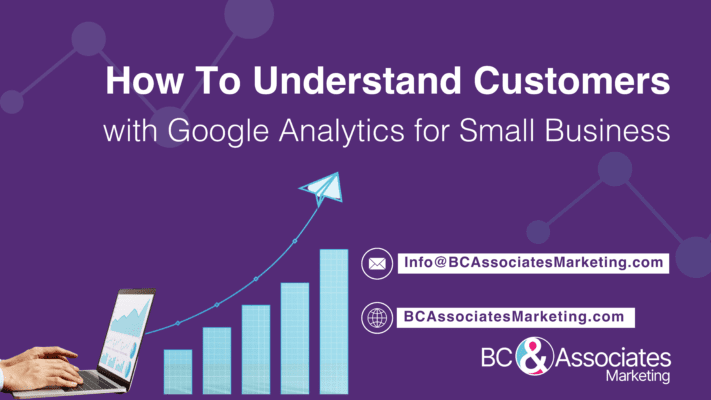Introduction
Imagine this: You’ve just launched a new digital marketing campaign. You’ve spent countless hours crafting the perfect message, designing eye-catching visuals, and scheduling posts at peak times. Weeks go by, but you’re left wondering, “Is it even working?” This is a common frustration among service-based small business owners who feel lost in the sea of digital marketing metrics. You’re not alone. The good news is that with the right approach, you can turn this confusion into clarity and drive your business forward.
Why Measuring and Analyzing Digital Marketing Performance Matters
Consider this scenario: Sarah runs a small graphic design business. She’s passionate about her work but struggles with knowing if her marketing efforts are paying off. She posts regularly on social media, sends out newsletters, and runs Google ads, but she has no clear idea of what’s working. This lack of clarity is not only frustrating but also costly. Without understanding her marketing performance, Sarah can’t make informed decisions about where to invest her time and money.
By measuring and analyzing your digital marketing performance, you can:
- Make Data-Driven Decisions: Knowing what works allows you to allocate your resources more efficiently.
- Improve ROI: Focus on strategies that deliver results to increase your return on investment.
- Optimize Campaigns: Continuous monitoring helps you tweak and refine your campaigns for better outcomes.
- Stay Competitive: Keeping an eye on performance metrics ensures you stay ahead of competitors who might not be leveraging data effectively.
Step 1: Set Clear KPIs
The journey to effective digital marketing measurement starts with setting clear Key Performance Indicators (KPIs). KPIs are like the road signs that guide you to your destination. They help you track progress toward your marketing goals. Here’s how to set effective KPIs:
- Align with Business Goals: Your KPIs should directly reflect your business objectives. For example, if your goal is to increase website traffic, relevant KPIs might include unique visitors, page views, and bounce rate.
Feeling overwhelmed by your big business goals? We’re here to help! Check our Goal Setting Worksheet for Service-Based Businesses is designed to break those goals down into small, manageable steps.
- Be Specific: Vague goals lead to vague results. Instead of setting a goal to “increase social media engagement,” aim for something specific like “increase Instagram engagement by 20% over the next quarter.”
- Make Them Measurable: Choose KPIs that you can quantify. This might include metrics like conversion rate, cost per acquisition (CPA), or average order value (AOV).
- Set Realistic Targets: Your KPIs should be challenging but achievable. Setting unrealistic targets can demotivate your team and lead to frustration.
- Regularly Review and Adjust: Business goals can change, so it’s essential to review and adjust your KPIs regularly to ensure they remain relevant.
Step 2: Use Analytics Tools to Track Performance
Once you’ve set your KPIs, it’s time to track your performance using analytics tools. These tools are like the GPS for your digital marketing journey, providing valuable insights into how your campaigns are performing. Here are some popular analytics tools:
- Google Analytics: A must-have tool for tracking website performance. It provides insights into traffic sources, user behavior, and conversion rates. For instance, Sarah used Google Analytics to discover that most of her traffic came from Pinterest, leading her to focus more on that platform.
Read our blog on How To Understand Customers with Google Analytics for Small Business.

- Website Analytics: Tools like Google Search Console or Hotjar, offers data on search queries, clicks, and impressions.
- Social Media Analytics: Platforms like Facebook, Instagram, and LinkedIn offer in-built analytics to track engagement, reach, and follower growth. Sarah realized her Facebook posts performed better on weekends, so she adjusted her posting schedule accordingly. Scheduling tools like Metricool or Tailwind have customizable analytics dashboards.
- Email Marketing Analytics: Tools like Mailchimp and Constant Contact provide data on open rates, click-through rates, and conversion rates for your email campaigns. Sarah’s email campaigns saw higher engagement when sent mid-week, guiding her future email scheduling.
- Customer Relationship Management (CRM) Systems: CRMs like HubSpot and Salesforce offer detailed analytics on customer interactions and sales performance, helping Sarah track leads and conversions from her marketing efforts.
Step 3: Adjust Strategies Based on Insights
Collecting data is only half the battle. To truly benefit, you need to adjust your strategies based on the insights you gather. Here’s how to do it effectively:
- Analyze Your Data: Regularly review your analytics reports to identify trends and patterns. Look for areas where your performance is strong and areas that need improvement. Sarah noticed that her blog posts with infographics received more shares and comments, so she started incorporating more visual content.
- Test and Learn: Implement A/B testing to compare different strategies and determine what works best. Sarah tested different email subject lines to see which had higher open rates.
- Optimize Underperforming Campaigns: If a campaign isn’t delivering the desired results, don’t be afraid to make changes. This might involve adjusting your target audience, refining your messaging, or increasing your budget.
- Double Down on Successful Tactics: When you find strategies that work well, allocate more resources to them. This could mean increasing your ad spend on high-performing campaigns or creating more content that resonates with your audience.
- Continuous Improvement: Digital marketing is an ongoing process. Continuously monitor your performance and be prepared to make adjustments as needed to stay on track with your goals.
Common Mistakes and Myths
Even with the best intentions, it’s easy to fall into common traps when measuring and analyzing digital marketing performance. Here are some mistakes and myths to watch out for:
- Focusing on Vanity Metrics: Metrics like likes, shares, and impressions can be misleading. While they might look good on paper, they don’t necessarily translate to business success. Focus on metrics that align with your business goals.
- Ignoring Negative Feedback: Negative feedback can provide valuable insights into areas for improvement. Don’t dismiss it; instead, use it as an opportunity to learn and grow.
- Assuming More Traffic Equals More Sales: Increased website traffic doesn’t always lead to more sales. It’s essential to focus on conversion metrics to ensure your traffic is resulting in tangible business outcomes.
- Not Setting Clear Goals: Without clear goals, it’s challenging to measure success. Ensure you have well-defined KPIs and objectives from the outset.
- Failing to Act on Data: Collecting data is pointless if you don’t use it to inform your strategies. Make sure you regularly review your analytics and take action based on the insights you gather.
Want to learn how you can turn myths into actionable truths? Watch our video Turning 10 Marketing Myths to Actionable Truths
Best Practices for Measuring and Analyzing Performance
To get the most out of your digital marketing efforts, follow these best practices:
- Set Up Automated Reporting: Use tools to automate your reporting processes. This saves time and ensures you have access to up-to-date data. Sarah set up automated reports in Google Analytics to receive weekly summaries of her website performance.
- Use Dashboards: Create dashboards that provide a visual overview of your key metrics. This makes it easier to track performance at a glance.
- Integrate Your Tools: Ensure your analytics tools are integrated with your other marketing platforms. This provides a holistic view of your performance and helps you identify correlations and trends.
- Regularly Review and Adjust: Set aside time each month to review your performance and make necessary adjustments. This keeps your strategies aligned with your goals.
- Stay Informed: Keep up with the latest trends and best practices in digital marketing. This ensures you’re using the most effective tactics and tools.
Trends in Digital Marketing Performance Measurement
The world of digital marketing is constantly evolving. Here are some current trends to keep an eye on:
- AI and Machine Learning: These technologies are being used to analyze vast amounts of data and provide more accurate insights. Tools like Google Analytics 4 leverage AI to offer predictive metrics.
- Attribution Modeling: Understanding which marketing channels contribute to conversions is becoming more sophisticated. Multi-touch attribution models are gaining popularity.
- Customer Journey Mapping: Tracking the entire customer journey, from awareness to conversion, provides a more comprehensive view of performance.
- Data Privacy Regulations: With increasing regulations like GDPR and CCPA, it’s essential to ensure your data collection practices are compliant.
- Real-Time Analytics: Real-time data allows for quicker decision-making and more agile marketing strategies.
Bonus Tips: Leveraging Insights for Greater Impact
To maximize the impact of your digital marketing efforts, consider these additional tips:
- Combine Quantitative and Qualitative Data: While quantitative data provides numbers and trends, qualitative data offers context and deeper insights. Use both to inform your strategies. Sarah started conducting customer surveys to complement her web analytics data, gaining a deeper understanding of her audience’s needs.
- Invest in Training: Ensure your team is proficient in using analytics tools and interpreting data. This might involve investing in training or hiring data specialists.
- Create a Feedback Loop: Encourage feedback from your team and customers to continuously improve your strategies.
- Collaborate Across Departments: Share insights with other departments like sales and customer service. This ensures a unified approach to achieving business goals.
Understanding and measuring your digital marketing performance is essential for making informed decisions and optimizing your strategies. By setting clear KPIs, using analytics tools, and adjusting your tactics based on insights, you can achieve better results and drive business growth. Don’t let a lack of clarity hold you back—take control of your digital marketing performance today.
For more tips on optimizing your marketing strategies, check out our blog on Why Small Businesses Must Track Marketing Strategies.

P.S. Ready to spark your unique opportunities and ignite your marketing? Here are three ways to work with us.
1. 📞 Schedule a Complimentary 15-minute Call and let’s delve into your goals and answer any questions you may have.
2. 📘 Read Beverly’s book Marketing for Entrepreneurs a quick guide filled with actionable steps to help make your brand and business shine even brighter. 🎙️ Listen to Beverly’s Marketing Podcast where she interviews entrepreneurs to get inspired and gain new business and marketing insights.
3. 🎓 Learn more about marketing and Enroll in Our Marketing Courses designed to bring clarity to your business efforts. They’re easy-to-understand and self-paced, perfect for busy entrepreneurs like you.



